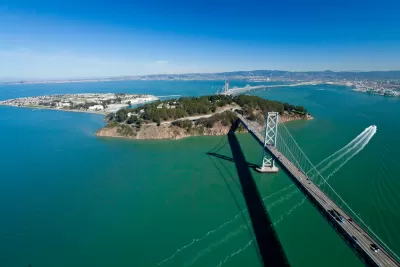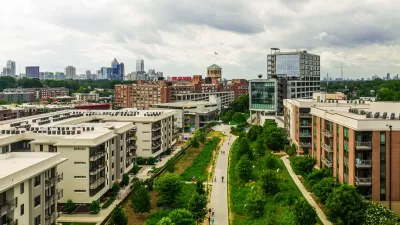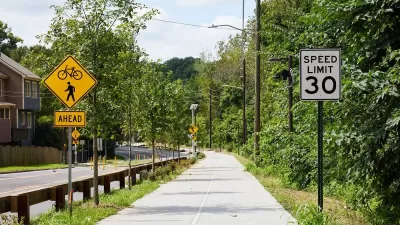Writing in the New York Times, Allison Arieff asks what happened to the great works of public infrastructure from years past that stand as today's monuments to America’s achievements.

The investment in infrastructure in America today is mostly spent on what Arieff describes as "deferred maintenance"—the road repairs, bolt replacements, etc. The bridges and tunnels and other infrastructure investments that really shaped a city seem to be a thing of the past, with stories about infrastructure largely focusing on cost overruns or the failure of existing construction.
Is the age of great infrastructure over? Perhaps not, as Arieff points out while focusing on Atlanta's BeltLine (the 22-mile transit greenway around the city of Atlanta) and the reinvestment and reimagination of the Los Angeles River—the concrete waterway that snaked through the city and has been largely ignored for decades.
Arieff places part of the responsibility for the lack of enthusiasm in new infrastructure at the feet of the policy peoples (including planners!) who are supposed to sell the benefits of such projects to the community.
…engineers, planners and policy makers tend to focus on wonky stuff like percentage of parkland per person. They’re awash in acronyms like V.M.T. (vehicle miles traveled), too reliant on planning terms like modeshare that don’t resonate with the general public. These things may be useful in measuring the metrics of a city, but they sure don’t get to the reasons people want to live there.
FULL STORY: What Happened to the Great Urban Design Projects?

Maui's Vacation Rental Debate Turns Ugly
Verbal attacks, misinformation campaigns and fistfights plague a high-stakes debate to convert thousands of vacation rentals into long-term housing.

Planetizen Federal Action Tracker
A weekly monitor of how Trump’s orders and actions are impacting planners and planning in America.

In Urban Planning, AI Prompting Could be the New Design Thinking
Creativity has long been key to great urban design. What if we see AI as our new creative partner?

California Creates Housing-Focused Agency
Previously, the state’s housing and homelessness programs fell under a grabbag department that also regulates the alcohol industry, car mechanics, and horse racing.

Chicago’s Ghost Rails
Just beneath the surface of the modern city lie the remnants of its expansive early 20th-century streetcar system.

Baker Creek Pavilion: Blending Nature and Architecture in Knoxville
Knoxville’s urban wilderness planning initiative unveils the "Baker Creek Pavilion" to increase the city's access to green spaces.
Urban Design for Planners 1: Software Tools
This six-course series explores essential urban design concepts using open source software and equips planners with the tools they need to participate fully in the urban design process.
Planning for Universal Design
Learn the tools for implementing Universal Design in planning regulations.
planning NEXT
Appalachian Highlands Housing Partners
Mpact (founded as Rail~Volution)
City of Camden Redevelopment Agency
City of Astoria
City of Portland
City of Laramie





























